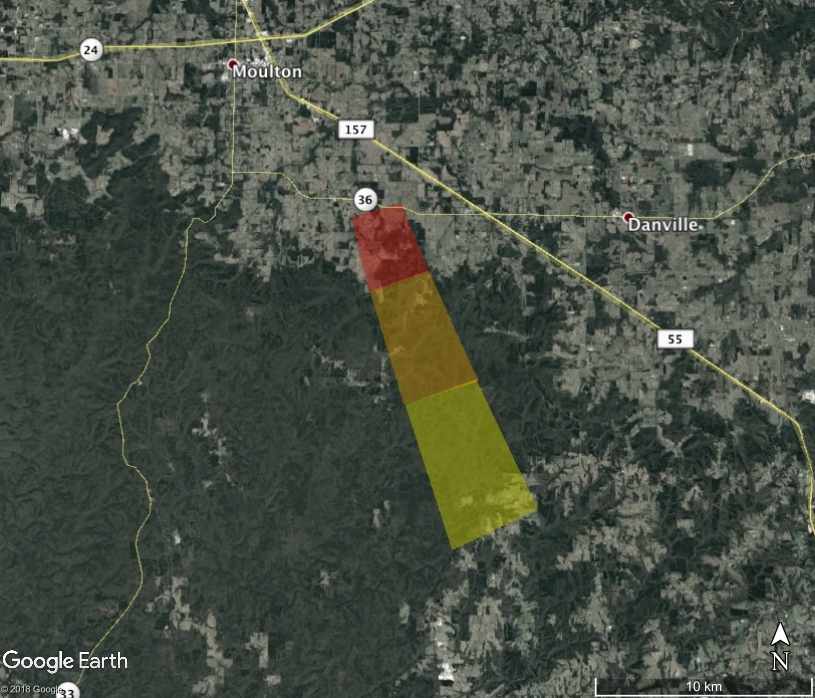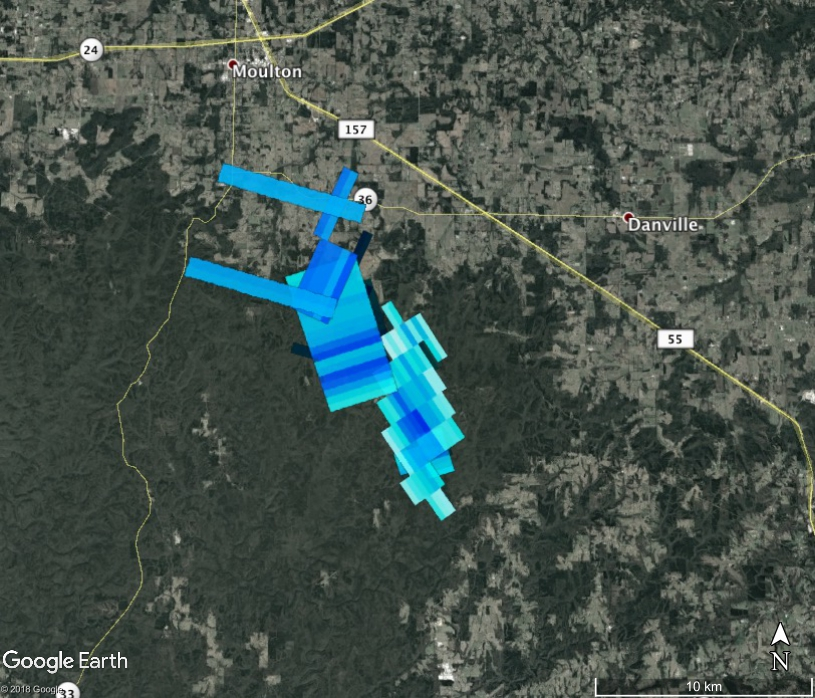DATE/TIME10/30/2012 @ 22:35:59 UTC10/30/2012
|
LAT/LONG34.33625 • -87.189535
34.33625
|

This meteorite fall was an early evening fireball that occurred at 5:35 PM local time on the 30th of October 2012, or 22:35:59 on 30 Oct 2012 UTC. The fireball was seen northwest of Birmingham, Alabama and fifty-six eyewitnesses reported it to the American Meteor Society across Alabama and all surrounding states. Twelve eyewitnesses near reported hearing sonic booms and/or concurrent noise from the falling meteorites.
Meteorites have been recovered from this event, but classification by the Meteoritical Society is currently pending. For this reason the name “Addison” is used as a provisional name in this report as it is one of the closest named localities to the meteorite find location. Most meteorites from this event fell within the Bankhead National Forest.
This event is recorded as American Meteor Society event number 1681 for 2012. Signatures of falling meteorites can be found in imagery from four nearby weather radars. In the NEXRAD weather radar network operated by NOAA, the KOHX (Nashville, TN), KBMX (Birmingham, AL), KFFC (Atlanta, GA), and KHTX (Huntsville, AL) radars record signatures of falling meteorites.
The first appearance of falling meteorites on radar occurs at 22:36:56 UTC and 16,190 m above sea level (ASL) in the 2234 UTC data set for the KOHX radar in the 3.4 degree elevation radar sweep. Signatures consistent with falling meteorites appear in a total of six radar sweeps from the four radars, with a final signature appearing at 22:42:32 UTC.
Calculations of mass and total number of meteorites based on weather radar data indicate that this meteorite fall is approximately 31 to 37x the total mass of the Park Forest, IL meteorite fall in 2003. This value comes with a caveat, however, in that the fragmentation behavior of this fall is skewed more strongly towards the survival of small meteorites than any meteorite fall observed in NEXRAD data to date. The Addison fall fragmented extensively, producing copious small meteorites but probably very few larger stones. The largest meteorites seen in NEXRAD data have an estimated mass of only 2.69g, which is smaller than for most meteorite falls.
The meteorite type is awaiting classification of one of the recovered meteorites.
